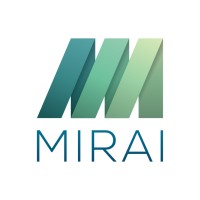Why Cloud-Native in ALM? A business-oriented analysis


Migration to the cloud is gaining momentum in financial services. We see an increasing number of banks, especially large banking organizations, shifting most of their workloads to the public cloud.
Traditional solutions can be typically deployed both using on-premise datacenters and on the cloud. This makes no difference to the end user. Whether the servers behind a front-end application are sitting in a datacenter owned by the bank or are virtual machines in a public cloud will be irrelevant to business users when using traditional software.
This changes completely when transitioning to cloud-native. A cloud-native solution is a solution that has been built ground-up to be used on a cloud environment and, as such, can leverage on technical resources that traditional solutions cannot benefit from. Cloud-native solutions offer unique capabilities that are extremely relevant for business teams. This article provides a very short summary of the positive impacts that these cloud-native capabilities typically have for functional teams.
If we focus on ALM in banking, which is Mirai Advisory’s main area of specialization, over the last few years we have seen clear examples of how ALM functional teams have benefited tremendously from using our cloud-native ALM solution.
Scalability
When using a Cloud-Native solution, you are using a set of properly interconnected microservices, and not a single monolithic piece of software. This microservice-based structure enables scalability.
Cloud-native solutions can scale independently, support continuous integration allowing the organization to always be using the most updated version, enable a better time-to-market when new functionalities need to be added or existing ones are to be extended and, finally, cloud-native solutions are more resilient compared to traditional solutions.monolithic piece of software. This microservice-based structure enables scalability.
Cloud-native solutions can scale independently, support continuous integration allowing the organization to always be using the most updated version, enable a better time-to-market when new functionalities need to be added or existing ones are to be extended and, finally, cloud-native solutions are more resilient compared to traditional solutions.
Scalability is a key benefit for ALM teams when using Cloud-Native solutions. There are two kinds of scalability in cloud – vertical and horizontal.
- Vertical scalability is essentially the capability of adding more resources to a server currently in use, up to the maximum number of resources that server can support
- Horizontal scalability is the capability of adding more servers, in a way that all servers being used act as if they were one single server.
The ability to scale to the desired infrastructure size during execution times while using a base minimum infrastructure only when no batches are executed means, in practical terms, that the ALM team can decide the calculation times of their recurrent executions. In one particular case, one of our clients reduced their monthly ALM execution process from 40 hours to less than half an hour.
Continuous development & continuous integration
Continuous Development, combined with Continuous Integration, is another great example of a capability delivered by cloud-native applications that brings an extremely positive impact to business teams.
Continuous development using agile distributed approaches is mostly enabled by the microservices-based nature of applications that have been developed to run on Cloud environments.
Microservices-based architecture was introduced back in 2012, bringing a new paradigm on how software could be developed. Microservices-based software development structures an application into different micro-tools or microservices that are self-contained and self-described. The use of microservices in cloud-native software development enables increased efficiency in what is known as Continuous Development (CD) and allows for new releases to be delivered with a predetermined (and typically high) frequency. In the specific case of Mirai ALM Tool, new versions are released using a quarterly cadence.
Furthermore, cloud-native allows these new frequent releases to be integrated seamlessly into existing implementations. This is what is known as Continuous Integration (CI).
When using traditional ALM solutions, banks are very often stuck with old versions, as upgrading to new versions require upgrade projects that typically involve significant levels of investment, time and effort.
The combination of CD with CI (CD/CI) allows clients to always be up to date and using the latest version. Version upgrade projects, a classic inconvenience for ALM teams using traditional ALM solutions, do not exist in a cloud-native environment. Instead, new versions are integrated seamlessly through CD/CI with no service interruption.
Very importantly, CD/CI minimizes time to market, as full support of new regulations and market best practices can be made available to existing clients in a matter of a few months, if not weeks, once these needs are identified.
Cost Minimization
The total cost of ownership for banks using cloud-based ALM solutions is minimized due to a myriad of reasons. The main reason is related to the irregular utilization pattern observed in the case of ALM solutions, with strong computational use towards the beginning of each month, when end-of-previous-month data is made available and processed. As cloud-native solutions apply a pay-per-use approach, banks using these solutions tend to have strong infrastructure savings compared to banks using traditional solutions.
Welcome to the new paradigm
Cloud-native in ALM for banks is not a fad. Far from that, cloud-native brings a change of paradigm that strongly benefits ALM teams, providing them with increased flexible performance while decreasing costs and ensuring that the very latest software version is always available.
Want to know more about why Mirai Advisory has chosen to transition Cloud-Native solutions?
Watch our interview with CEO of Mirai Advisory, Olmo Vázquez from RiskMinds International below and find out.
Mirai Advisory is an associate partner of RiskMinds International 2022.